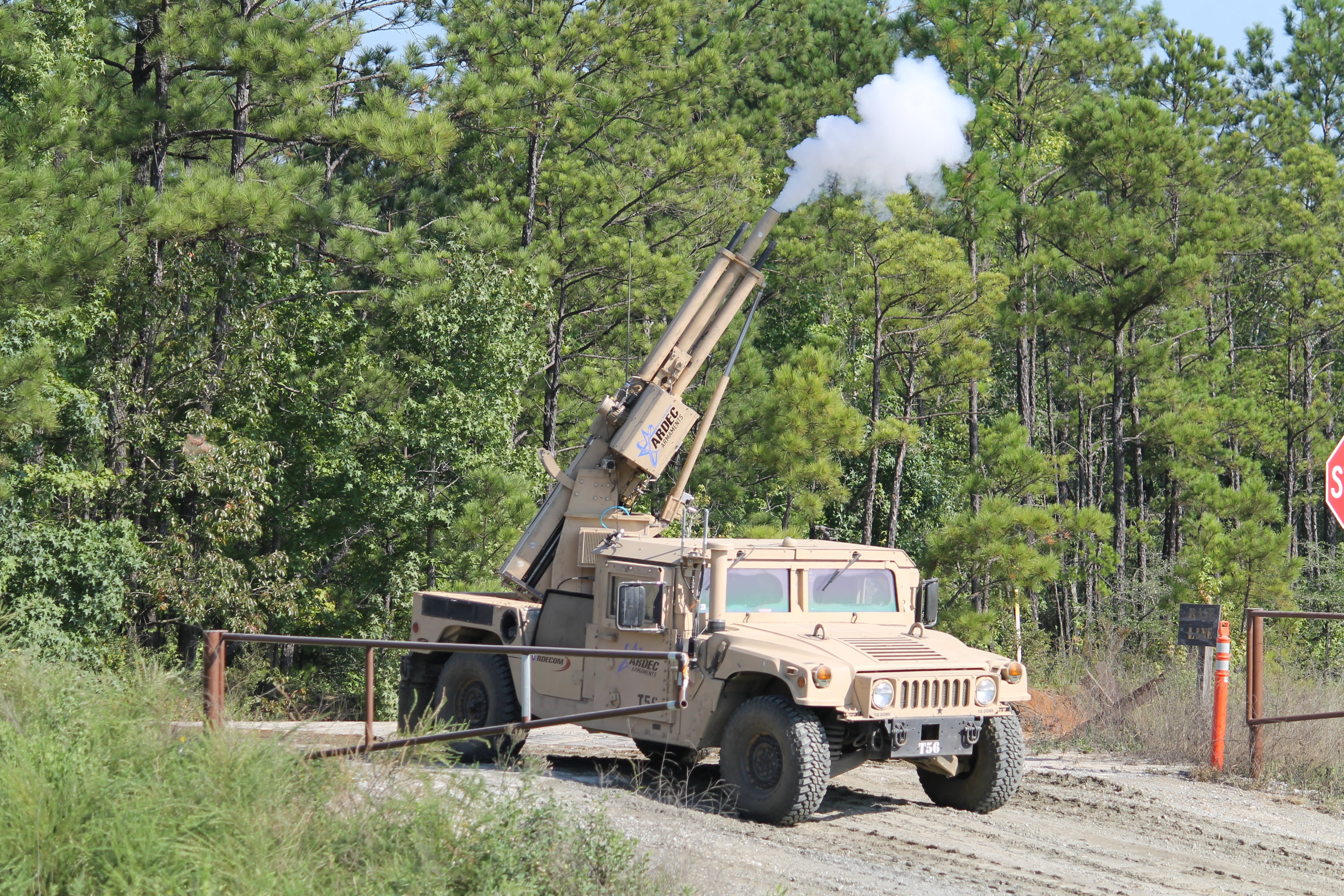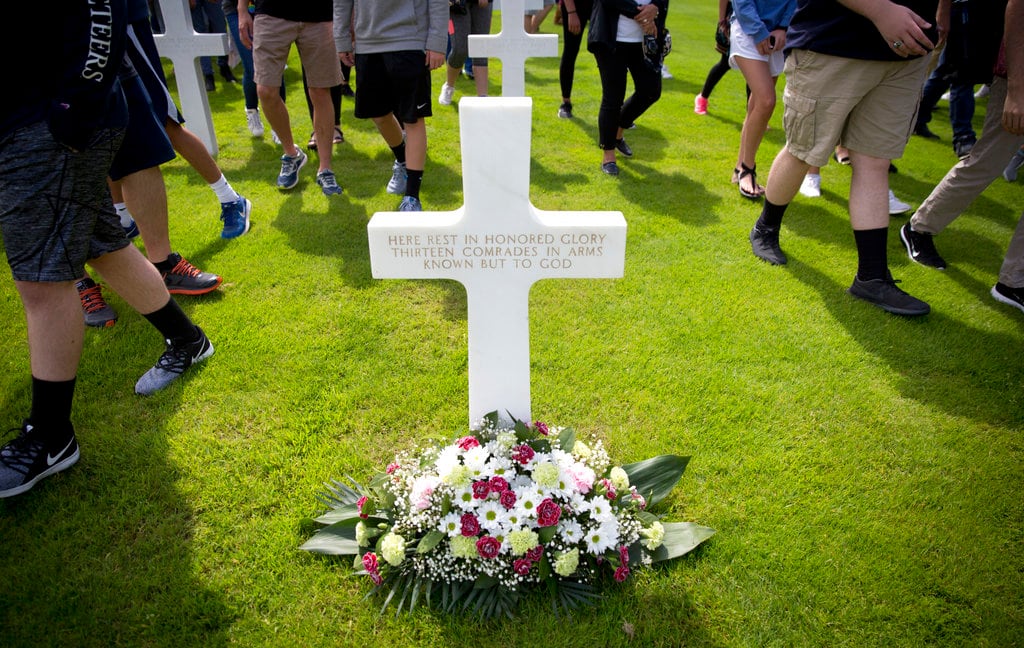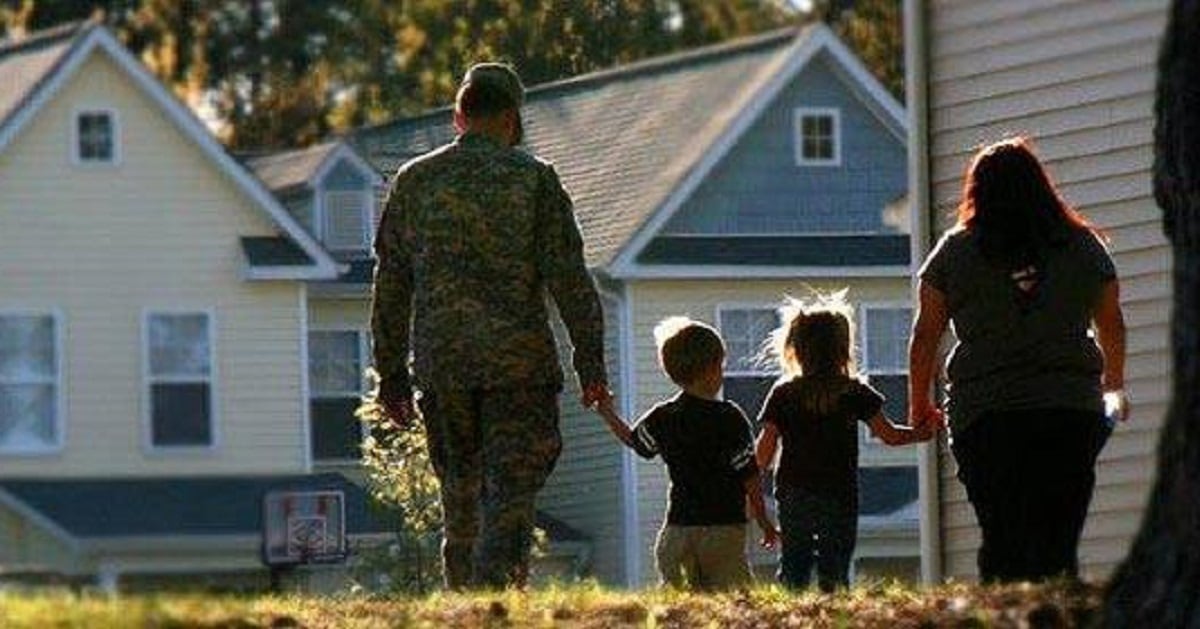FORT BENNING, Ga. ― The U.S. Army is no stranger to teaming manned aircraft with unmanned ones, but it is now tackling how to approach the concept on the ground ― a far more complicated undertaking considering the difficult and extremely variable terrain and the multitude of terrestrial threats that exist on the modern battlefield.
The Army’s Maneuver Center of Excellence held a demonstration at Fort Benning, Georgia, on Tuesday that showcased its efforts to develop a robotic wingman within the maneuver force and how to incorporate robotic capability within a tank formation.
Almost out of necessity, the Army has progressed rapidly in aerial manned-unmanned teaming. It was already deep in testing the concept of pairing manned helicopters with unmanned aircraft systems when the service decided in 2013 to restructure its aviation fleet. The move included retiring the Army’s armed scout helicopter ― the OH-58 Kiowa Warrior ― and filling the gap with AH-64 Apache attack helicopters and Shadow drones. The capability is fielded, being used operationally and continues to grow incrementally.
The Army sees a promising future for manned-unmanned teaming, or MUM-T, in ground maneuver forces, but has years to go before there’s a clear picture of how capability will be implemented in real battlefield scenarios.
“We think you can pair unmanned aerial systems, unmanned ground systems with the ground force to extend the reach of that formation and extend the time over which they can be effective,” Don Sando, the deputy to the commanding general for combat development at the Maneuver Center of Excellence, told Defense News at Tuesday‘s demonstration.
Much of the technology is there to drive robotics and autonomy into maneuver formations, but when it comes to developing the tactics, techniques and procedures, the Army is figuring out “how we want to massage this,” said Robert Sadowski, robotics chief with the Army‘s Tank Automotive Research, Development and Engineering Center. “The next 10 to 15 years will help us figure out how we want to embed robotics and autonomous systems into the formation.”
Much of the work now is being driven by the Army’s Combat Vehicle Modernization Strategy and its Robotics and Autonomous Systems Strategy, both published roughly within the last two years.
[Army Details Draft Robotics and Autonomous Systems Strategy At AUSA]
The demonstration featured two separate scenarios exhibiting capabilities developed over the last year and are still in early phases of development and refinement.
In the first scenario, a semiautonomous MRZR with a tethered Hoverfly quadcopter is deployed to conduct reconnaissance of enemy forces. A robotic wingman Humvee moves out ahead of manned Humvees, sensing enemy positions.
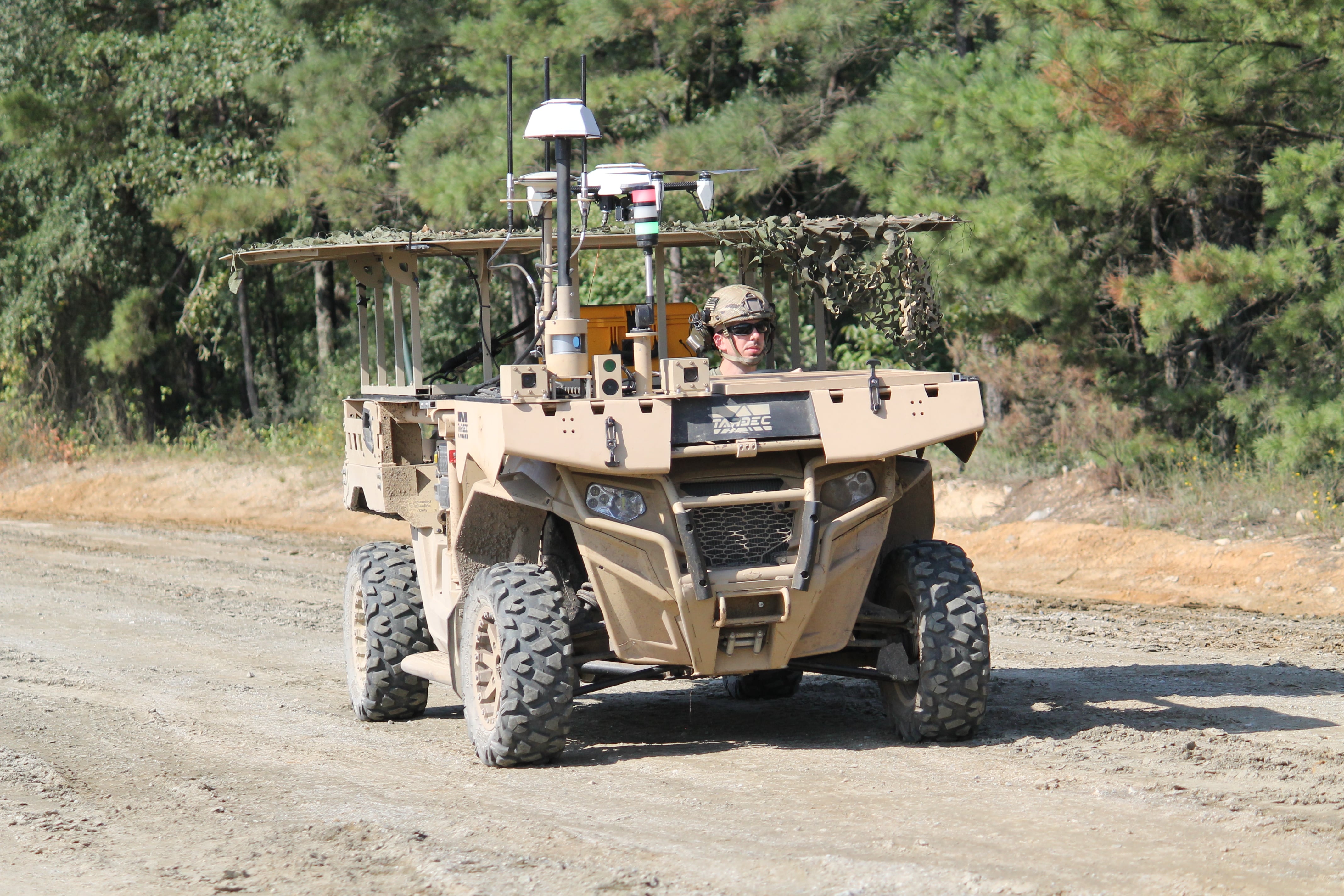
A manned Humvee follows behind the unmanned wingman with a Long Range Advance Scout Surveillance System, or LRAS3, then identifies targets and passes the information to the robotic wingman. The manned Humvee then directs the robotic wingman to orient on a target.
While the Humvee section prepares to fire on a target, an M113 armored personnel carrier moves to a second area of interest, opens up its back ramp and deploys a small Packbot ground robot from within the chassis to check out the area.
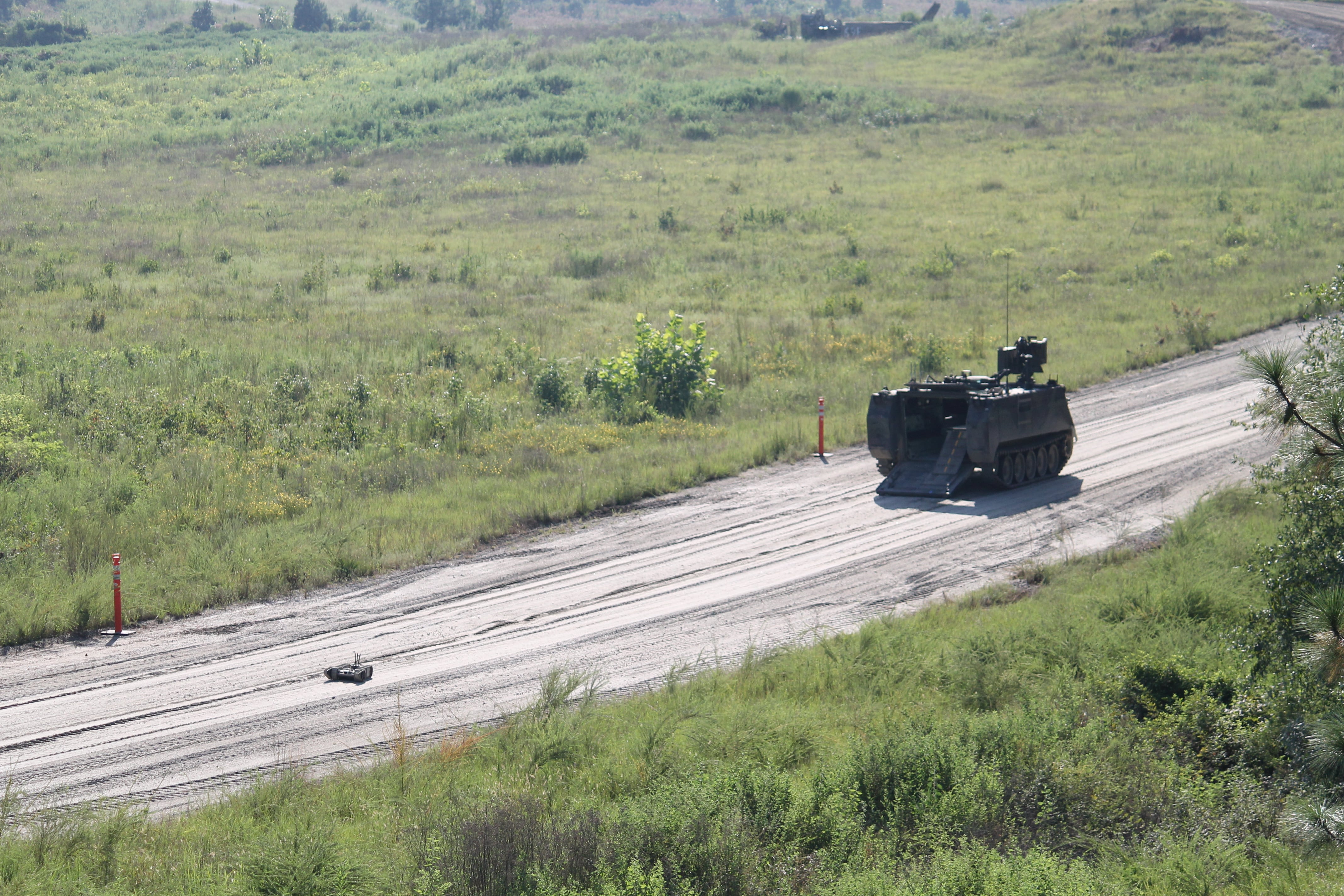
The Packbot “in a marsupial sense” then returns to the vehicle, climbing up the ramp and back into a shelf inside.
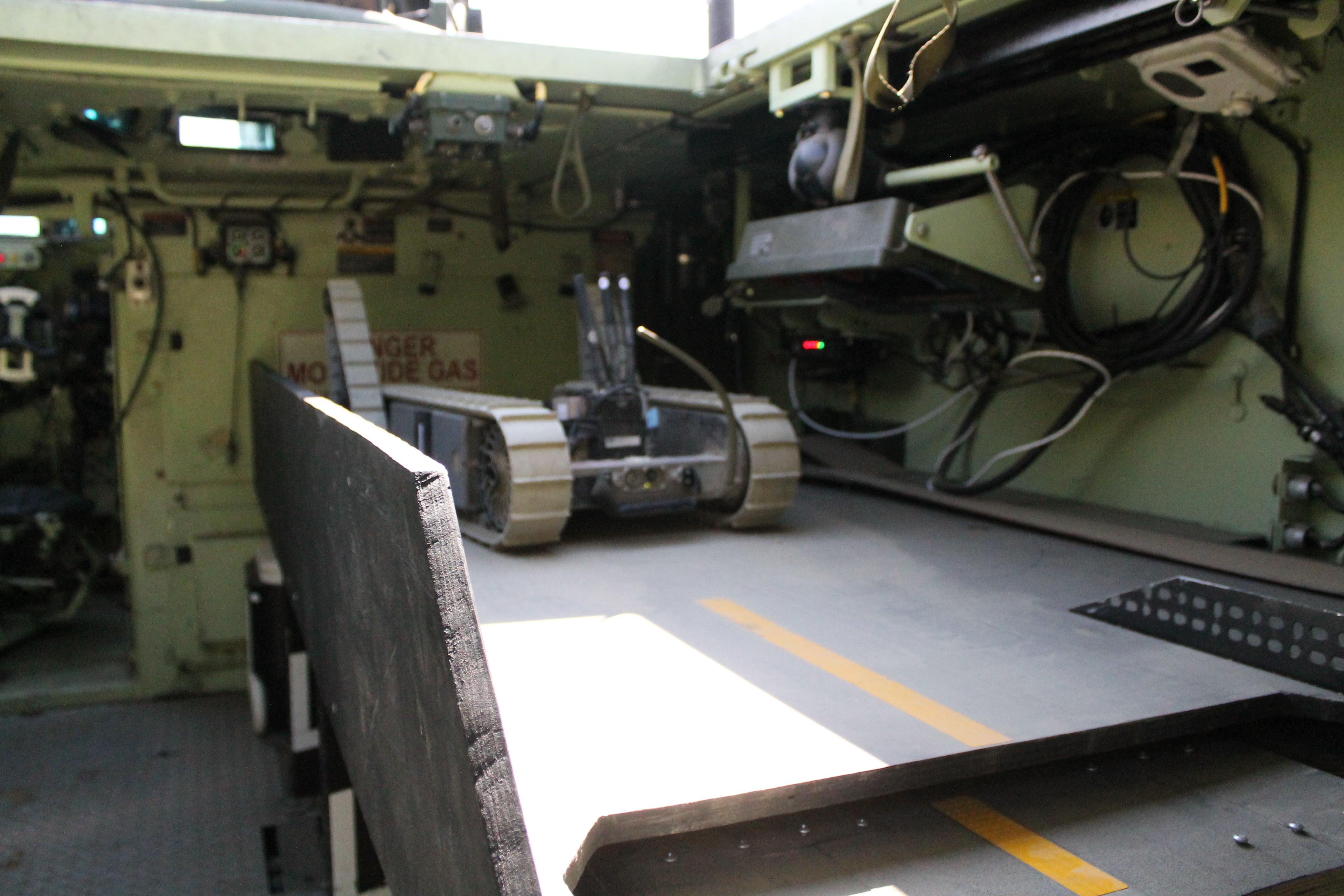
The unmanned wingman then fires on the enemy, and the MRZR and manned Humvee with LRAS3 confirm the threats are taken out.
The demonstration was not without flaws. The robotic wingman’s M240 machine gun, which can be easily cleared by a human operator, became jammed. A safety team had to move out to the wingman and fix the jam.
The Army’s Armament Research, Development and Engineering Center, or ARDEC, is currently developing an automated machine gun.
When using experimental systems paired with old equipment, while trying to push the capability envelope, it’s not unexpected to encounter technical issues, an announcer at the demonstration explained to the crowd.
The wingman concept is just in its first phase of a three-year joint capability demonstration between ARDEC and TARDEC.
The second demonstration ― the Abrams Lethality Enabler ― was designed to show what can be done if the weapons loader in an Abrams tank is freed up to control ground robots. The concept incorporates an Abrams compact autoloader in order to allow the loader to focus on other tasks.
[US Army to Demo Robotic Wingman Vehicles in 2017]
In the second scenario, the MRZR continues its reconnaissance, identifying enemy locations. An Abrams section is sitting in a concealed position while an 81mm automated direct/indirect mortar suppresses the enemy with firepower while another semiautonomous vehicle ― the M58 smoke generator called Wolf ― moves out into a position where it can conceal the Abrams section in order for it to move into a more advantageous location for firing on the enemy.
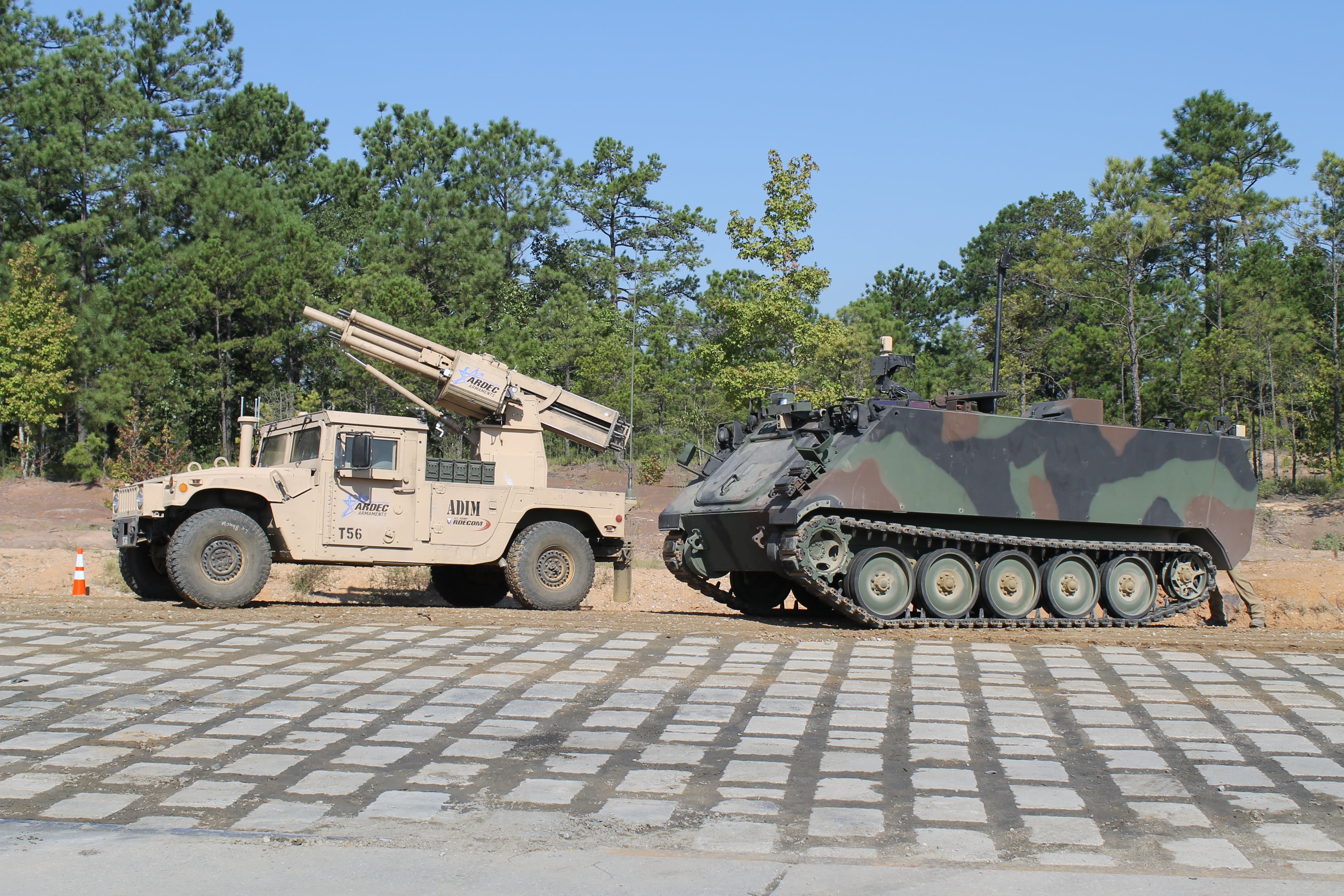
The Wolf system deploys heavy smoke and the Abrams section moves up a hill and behind a treeline to get into position. One of the tanks concealed by trees fires on the enemy, taking out the target.
Throughout the two demonstrations, the robotic systems were commanded using a common controller.
The demonstrations, according to Sadowski, are meant to “wet the whistle.” He said in two to five years, the expectation is to take these ground robotics programs out to the National Training Center with much-improved tracking capability and the ability to conduct operations faster.
“You will actually see a much closer to real tempo,” he said.
Sadowski said the U.S. military obviously isn’t the only military in the world developing robotic and autonomous capabilities. Russia, for example, has fielded similar capabilities and is testing them in combat in Syria.
But the way the U.S. Army can continue to stay ahead of the curve is to figure out the best possible way to employ the technologies within formations, he said, which means frequent demonstrations like the one at Fort Benning are necessary.
The penultimate demonstration for such capabilities will happen in 2023, he told Defense News following the exercise. But the Army will experiment with many configurations and scenarios leading up to that, including upcoming exercises such as the Joint Warfighting Assessment in Germany in March 2018.
One of the challenges the effort faces now is having to use earlier-generation mechanical systems and trying to automate them, but robotics and autonomous incorporation will become easier as the Army develops future systems such as the next-generation combat vehicle about to embark on a prototype-building phase.
Some other challenges won’t go away with more modern vehicles. The MCoE has to be sure to understand how these capabilities are employed with the force, including taking into account the cognitive burden on soldiers, said Col. Richard Hornstein, ARDEC’s military deputy director.
The Abrams Lethality Enabler program had to think about the effects on the loader. “[The war fighter] may be positioned in a certain way in a vehicle and it’s driving down bumpy tank trails, and how can he make decisions if he’s being overwhelmed by nausea?” Hornstein said. “So there are a lot of cognitive burdens as well that need to be understood as we start implementing robotics control from moving platforms on the battlefield.”
Jen Judson is an award-winning journalist covering land warfare for Defense News. She has also worked for Politico and Inside Defense. She holds a Master of Science degree in journalism from Boston University and a Bachelor of Arts degree from Kenyon College.
